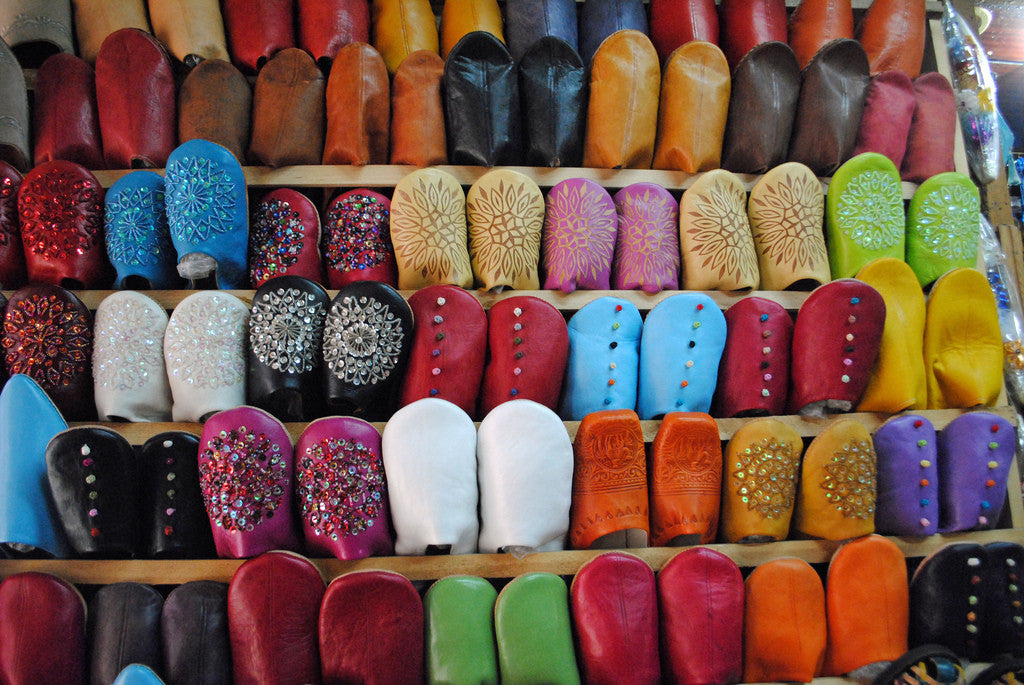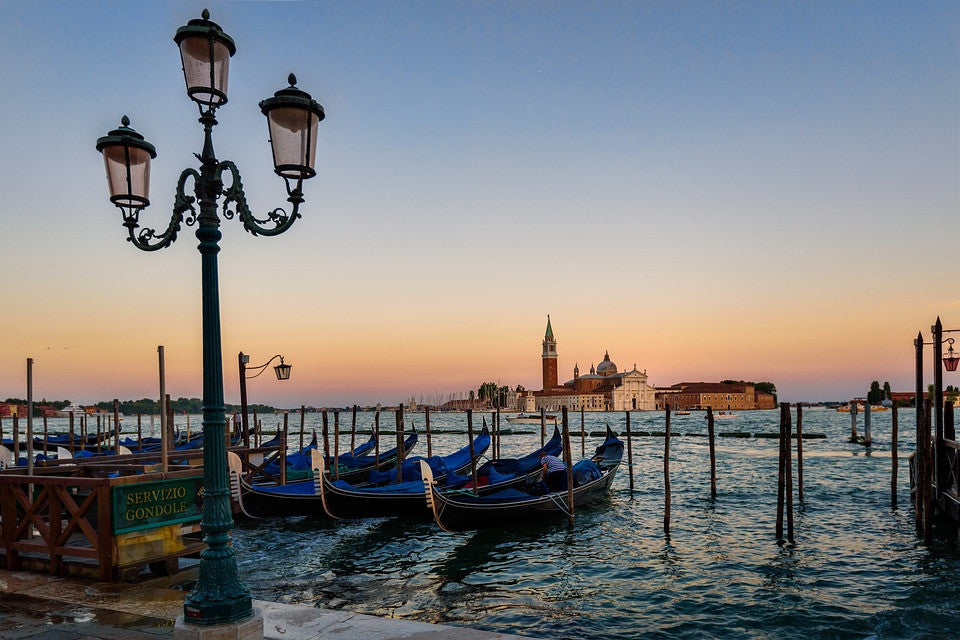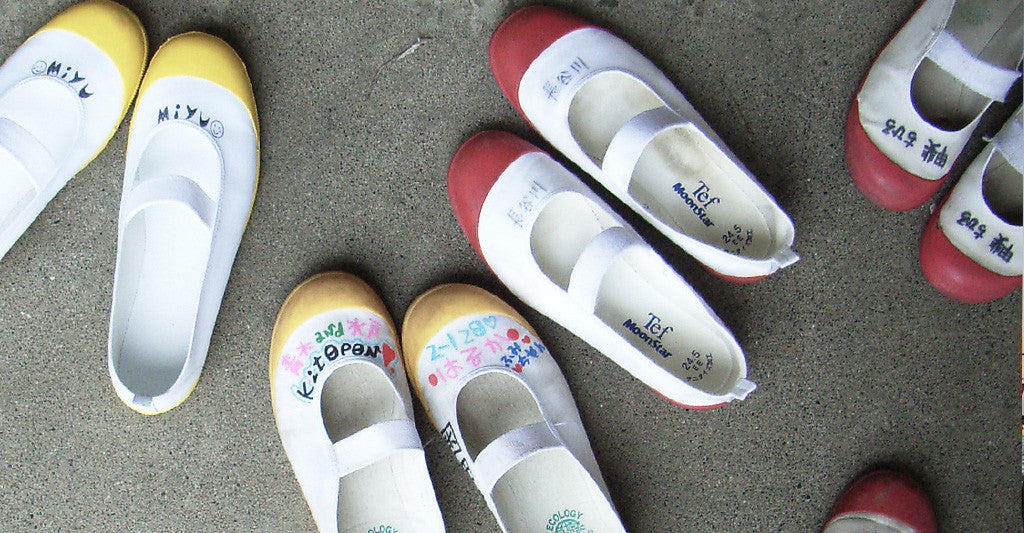the history of the slipper
Feeling comfortable is one of life’s simple pleasures. Whether it’s sleeping on a pillow, lying on a soft mattress, or slipping into warm slippers, these little luxuries have all become part of our daily routines. But where did the slipper come from and how long have they been keeping our feet warm?
Here at mahabis, we’ve taken on the challenge of redesigning both mens and womens slippers for the 21st century. However, before we look at the role of the slipper today, we thought we’d look into where, when, and how exactly the slipper has changed over time. So, keep reading to discover more about the history of the humble slipper!
We will cover the following:
- Who invented the first slippers
- Slippers in 12th Century Vietnam
- The Venetian Furlane Slipper
- Slippers in Victorian England
- Japanese Slippers - the Uwakbuki
- Native American Mocassin Slipper
- 21st Century Western Slipper
slipper origins
The word ‘slipper’ was first recorded in English in 1478, and appears to derive from the Old English language from the words "sliper" and "slipor" which means "slip-shoe". However, it seems the slipper has been around for much longer. It turns out that Spanish cave drawings that date back more than 15,000 years ago illustrate humans wearing animal skin and animal fur around their feet, what one would assume was a make-do shoe or slipper for the time.

At Boscombe Down, roman bodies have been in the process of being dug up for the last fifteen years, so you might expect that if anything interesting was going to be found it would have been found by now. However, in 2008, a peculiar unearthing made headlines. The focal point of a body that was unearthed in 2008 was interestingly not the poignant fact that she was curled up with a child, but rather the fact that she had been buried in her slippers.
This suggests slippers go all the way back to 200AD. It is believed her slippers indicate her high social status, as the majority of the remaining 300 bodies there were wearing traditional boots (for their journey into the next life).
the invention of the slipper
So, it is clear the slipper, or at least the idea of the slipper, has been around for longer than we imagined.
However, who actually invented the first slipper remains distinctly unclear. A quick online search suggests that it was Alvin Slipper who invented the slipper, purely because he was fed up of his feet being cold, something which seems almost too simple to be true.
Some suggest that the surge of the slipper industry grew from the warehouse floor of the felt industry in northeast England where workers would make themselves footwear from the scraps that were left over which led to the likes of John William Rothwell, Samuel McLerie and other commercial retailers cashing in on this in the late 1800s.
Others say Florence Melton happened to invent the slipper by chance in the 1940s. Whilst she was investigating materials to improve the the helmets worn by World War II crew men, Melton discovered a perfect material for slippers. Foam. The softness of the material and its ability to be easily washed turned it into the perfect slipper for soldiers; indeed, Melton herself stated back in 2001, "I always thought in terms of filling a need”.
Melton’s discovery led to the invention of the first foam soled and washable slipper and to the Dearfoams brand, which is still around today.
the world in slippers
Throughout time different cultures have created their own version of the slipper to meet the demands of their people.
Take a look at some of the slippers throughout history that have influenced the styles we still see today.
12th century vietnam
Whilst the official discovery of the idea might have stemmed from either Slipper or Melton’s discoveries, the first actual recorded mention of the slipper is in Vietnam all the way back in the 12th century. Back then, slippers were not the simple everyday comfort we see them as today, but instead they were a symbol of captivity.
It was the female servants of rich sultans who wore them, as their loose fit and soft sole was a means of preventing them from running away easily on the rocky terrain outdoors.
the babouche
Some centuries later the slipper was developed in the middle east for a much less sinister reason. The moroccan babouche comes from the Arabic 'babush' or Persian 'papush'.
Inspired by the open back sandal, the focal point of the babouche is it’s exaggerated point at the toes. This, along with its ultra-soft design is said to reflect the fact that its wearers (often monarchs and 17th century french courtiers) cared excessively about their lifestyle and their appearance. They led a luxurious life, looked after by gophers and drivers, which ensured their footwear remained in excellent condition whilst they indulged in such optimum comfort.
The particular softness of the babouche stems from the process by which it is made: it is cleaned and dried repeatedly until it meets the prime level of softness.
Despite what we might think of as a bizarre appearance that is surely outdated, in 2016 the babouche featured in Vogue, named as 2016’s must have shoe. Artisan babouche slippers are still made nowadays in markets across Marrakech, Morocco, and remain a cultural icon.

the venetian furlane slipper
Around the same time, Italians were discovering yet another use of the slipper. The Venetian Furlane became particularly popular in the 16th century with Gondoliers. Whilst maintaining the comfort associated with the slipper, the furlane also had a much more practical purpose.
It’s rubber sole, made from old bicycle tyres, ensured that the gondoliers didn’t slip and also that they didn’t mark the paint on the gondolas. Meanwhile, the velvet upper (made from old dresses and curtains), preserves the elegant aesthetic associated with Venetian culture. Many are still made by hand, which serves to maintain the authenticity of the slipper.
Being both practical and attractive, the furlane slipper can still be seen around Venice today, both on the feet of gondoliers as they glide around the city, and for sale down cobbled alleys, drawing in numerous tourists with their rich history.

the prince albert slipper
Interestingly, it seems slippers and elegance remained intertwined throughout the centuries. As we move into the Victorian era, we see the appearance of the ‘Prince Albert Slipper’.
These are named after Queen Victoria’s husband because it was he who is said to have introduced the idea of the luxurious leather upper. Made with velvet, and lined with silk and a leather sole, these slipper-shoes were particularly elegant and attractive looking. They were worn by members of aristocracy in stately homes for dinners of a black dress code; to see a dinner suit worn along with a pair of slippers was far from unusual, something that might come as a surprise in today’s society.
Prince Albert Slippers were initially used simply for moving between rooms, clubs and smoking rooms at these dinners. Due to the latter, they have been informally renamed ‘smoking shoes’ more recently.
Despite beginning as a British icon, these slippers have made an appearance and a name for themselves in Hollywood, being pictured worn by celebrities such as Peter Lawford and Douglas Fairbanks Jr later in the 1940s and 50s. Even several decades after that, popular names such as Pharrell Williams and Kanye West have been seen wearing their slippers out and about. Ryan Gosling wore a pair on the US chat show, Late Night with Jimmy Fallon, making a statement that slippers are still significant and very much part of today’s culture. This was taken to an extreme in 2007, when a man named Derek Fan (also referred to as ‘the slipper man’), entered the Guinness book of records for wearing his dress slippers for a ground-breaking 23 years without ever taking them off.
Embroidered slippers also offered Victorian ladies the opportunity to show off their needlepoint skills and magazines from the time, such as Godey’s Lady’s Book and Peterson’s Magazine, contained patterns for slippers so that the latest trends could be recreated at home.
the uwakbuki slipper
A place where slippers are certainly no thing of the past is Japan. It remains a social obligation in Japan to take off your outdoor shoes as soon as you arrive indoors, (whether that be at a house, hotel, or school) and to swap them for a pair of slippers, that are usually lying ready and waiting.
People are expected to leave their shoes at the door both as a sign of respect, and due to the belief that the feet are supposed to need to rest after a long day of work. It is often the host who provides the slippers, and it is custom to bring a pair of your own socks to slip into before wearing them.
The specific area dedicated to where the shoes are left is known as the ‘genkan’, and is generally acknowledged as one of the most fundamental aspects of Japanese culture. Meanwhile, the light and comfortable slippers that are left ready to change into are known as ‘uwabuki’.
Even if you are just visiting Japan, it is usually expected to respect this custom and slip into your slippers at the entrance to anywhere indoors.

the mocassin slipper

Whilst not a formal part of culture, like in Japan, the mocassin slipper is a style that can often be seen worn today.
Largely associated with Native American culture, the design of the mocassin is simple, aligning with the Native American’s belief in minimal waste. Using animals every catch for either food or clothing, moccasins were originally made out of soft leather, usually deerskin.
The slippers were often bright and had colourful scenes of nature painted on them, which distinguished the different tribes from one another. The tribes would also personalise them with the way that they shaped the shoe or how they decorated them with their own beadwork.
You can see how much the design varied from tribe to tribe across North America here. Whilst mocassin slippers are generally made by machines in today’s society, (with an added fur lining for warmth and comfort), many Native American craftsmen still make handmade products too.
modern slippers

A world apart from the simplicity of the Japanese slipper or the elegance of the furlane, the western world has produced a variety of slippers in the 21st century to satisfy people’s demand for comfort and style.
Ranging from fluffy animal figures or children’s favourite cartoon characters, to what might be known as ‘grandad’ slippers, there is undeniably a wide range of options for slipper wearers to choose from.
Despite even Dorothy’s famous ruby slippers from The Wizard of Oz drawing attention and fame to the world of slippers, no particular design has quite succeeded in maintaining a lasting presence in today’s society.
find your perfect slipper with mahabis
Whilst it is clear that there is still a cultural need for slippers all these centuries later, there remains an abyss when it comes to finding the one slipper that fits all cultures, in all situations.
This is where mahabis comes in. Reinventing the slipper from the ground up, fusing Scandinavian minimalism with cultural influences from across the globe, mahabis are slippers that blend together a heritage-soaked aesthetic with modern design.
At mahabis, we pride ourselves on innovation, and that is why with a choice of styles, you can be sure to find the perfect slipper to help you put your feet up, and relax. Take a look at our range of fashionable slippers today!




